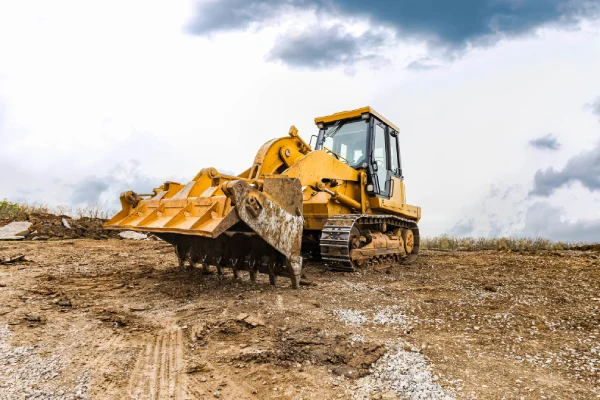How Proper Land Preparation Can Impact the Environment and Future Construction
After a building is demolished, many might think that the hardest part is over. However, what follows is equally crucial: post-demolition cleanup. This process involves more than just removing debris; it includes preparing the land for future use, which often requires a critical step known as grading. Ensuring the land is properly prepared impacts not only the environment but also any subsequent construction projects. Let’s explore why this step is so important and how it can make a real difference.

Why Proper Soil Smoothing Matters
Grading is essential because it directly affects how water will flow across a site. Without proper grading, water can pool in areas, leading to erosion or flooding. This can damage properties and create safety hazards. Proper grading ensures that water drains away from buildings and other structures, minimizing these risks. It’s a preventive measure that saves time and money in the long run.
Environmental Benefits of Land Adjustment
When you grade your land correctly, you help protect natural resources. Improper grading can lead to soil erosion, which harms plant life and affects local wildlife habitats. By ensuring that the land has a gentle slope, we prevent sediment from washing into rivers and lakes, preserving aquatic ecosystems. The environmental impact of careful grading cannot be understated.

Optimizing Sites for Future Construction
A well-graded site is much easier to build on. It provides a level foundation that reduces the complexity of construction projects, ultimately cutting down costs. Builders appreciate sites where grading has been done right, as they face fewer challenges related to uneven grounds or unexpected shifts in soil during construction.
Challenges in the Site Preparation Process
One major challenge in post-demolition cleanup is dealing with varying soil types. Different soils require different approaches to grading. Sandy soils may need stabilization techniques while clay-heavy areas might require additional drainage solutions. Understanding these needs is crucial for successful land preparation.
Steps for Effective Post-Demolition Land Prep
To ensure effective grading, follow these steps:
- Conduct a thorough assessment of the site’s topography and soil type
- Create a detailed grading plan outlining slopes and drainage paths
- Use appropriate machinery for leveling and shaping the land
- Incorporate erosion control measures such as silt fences or vegetation buffers
Best Practices in Land Leveling
Adopt industry best practices when tackling grading projects. Engage experienced professionals who understand the nuances of land preparation. Always use high-quality materials and equipment to ensure durability. Also, regular inspections during the process help identify potential issues early on, maintaining project integrity.
Regulatory Standards and Compliance Considerations
There are specific regulations surrounding grading activities, especially those involving large-scale projects. Be sure to comply with local zoning laws and environmental regulations. These standards exist to protect both property owners and the environment from adverse effects of improper grading.
Understanding Cost Factors of Post-Demolition Preparations
Costs associated with grading vary based on factors such as site size, soil condition, and complexity of the job. While investing in quality grading may seem costly upfront, it offers significant savings by preventing costly repairs related to poor drainage or unstable foundations.
Your Path Forward With Expert Help
If you’re planning a demolition project or need assistance with land preparation, reach out to experts in the field. They have the experience and knowledge necessary to ensure your site is ready for whatever comes next. Located in Temple, TX, our team at Ortiz Dumb Trailer Service is here to provide comprehensive solutions tailored to your needs. Give us a call at (254) 268-1544 to discuss your project requirements today!